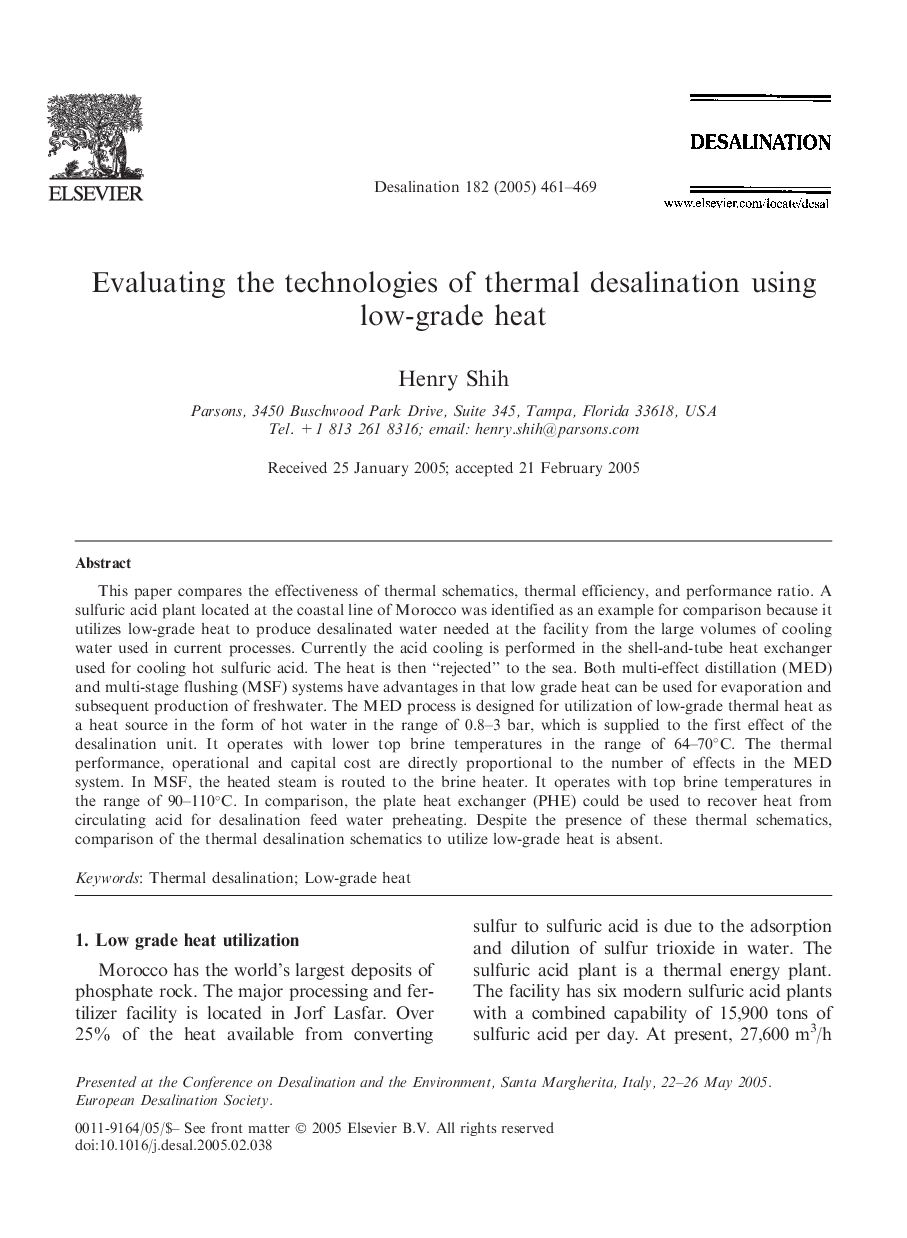| کد مقاله | کد نشریه | سال انتشار | مقاله انگلیسی | نسخه تمام متن |
|---|---|---|---|---|
| 9681003 | 1455508 | 2005 | 9 صفحه PDF | دانلود رایگان |
عنوان انگلیسی مقاله ISI
Evaluating the technologies of thermal desalination using low-grade heat
دانلود مقاله + سفارش ترجمه
دانلود مقاله ISI انگلیسی
رایگان برای ایرانیان
موضوعات مرتبط
مهندسی و علوم پایه
مهندسی شیمی
تصفیه و جداسازی
پیش نمایش صفحه اول مقاله

چکیده انگلیسی
This paper compares the effectiveness of thermal schematics, thermal efficiency, and performance ratio. A sulfuric acid plant located at the coastal line of Morocco was identified as an example for comparison because it utilizes low-grade heat to produce desalinated water needed at the facility from the large volumes of cooling water used in current processes. Currently the acid cooling is performed in the shell-and-tube heat exchanger used for cooling hot sulfuric acid. The heat is then “rejected” to the sea. Both multi-effect distillation (MED) and multi-stage flushing (MSF) systems have advantages in that low grade heat can be used for evaporation and subsequent production of freshwater. The MED process is designed for utilization of low-grade thermal heat as a heat source in the form of hot water in the range of 0.8-3 bar, which is supplied to the first effect of the desalination unit. It operates with lower top brine temperatures in the range of 64-70°C. The thermal performance, operational and capital cost are directly proportional to the number of effects in the MED system. In MSF, the heated steam is routed to the brine heater. It operates with top brine temperatures in the range of 90-110°C. In comparison, the plate heat exchanger (PHE) could be used to recover heat from circulating acid for desalination feed water preheating. Despite the presence of these thermal schematics, comparison of the thermal desalination schematics to utilize low-grade heat is absent.
ناشر
Database: Elsevier - ScienceDirect (ساینس دایرکت)
Journal: Desalination - Volume 182, Issues 1â3, 1 November 2005, Pages 461-469
Journal: Desalination - Volume 182, Issues 1â3, 1 November 2005, Pages 461-469
نویسندگان
Henry Shih,